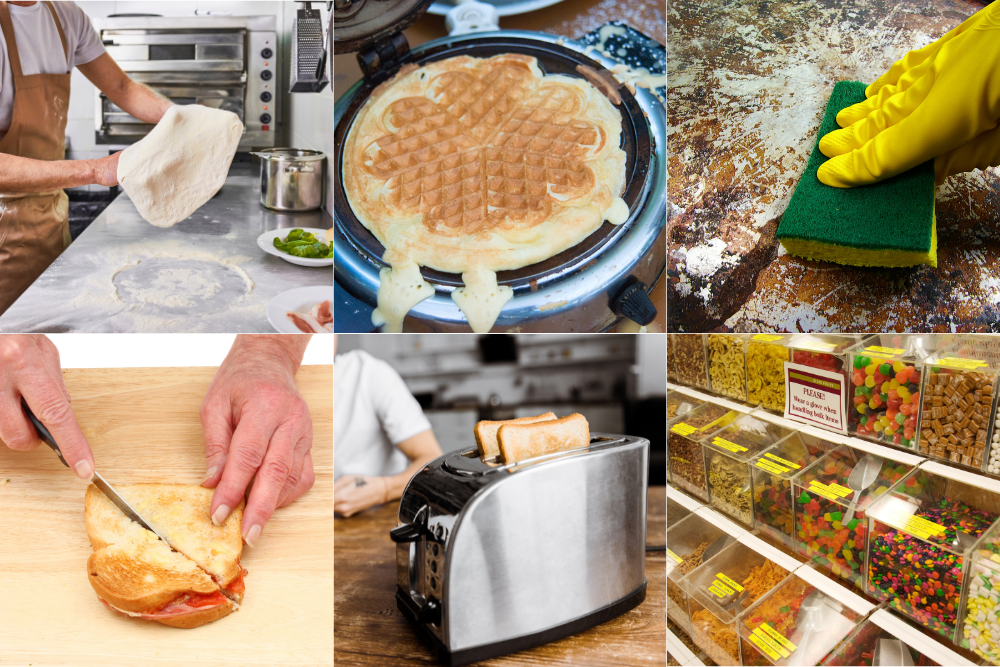
Gluten cross-contamination is no laughing matter and can significantly impact the health of someone following a strict, medically necessary gluten-free diet. In this article, I explain cross-contamination and share 31+ potential sources of gluten cross-contamination in the home, restaurants, and grocery stores. This article contains affiliate links. Please see my disclosures.
If you’ve been in the gluten-free community long enough, chances are you’ve heard the “cross-contamination” buzzword.
Gluten cross-contamination occurs when naturally gluten-free food comes in contact with food that contains gluten, a protein found in wheat, rye, barley, and sometimes oats (more on oats later), rendering the food no longer safe for someone on a gluten-free diet to eat.
People with celiac disease (coeliac disease) and other gluten-related disorders know that even a crumb of gluten can set off a cascade of symptoms in their body, making them run for the toilets and fueling inflammation at the weakest link in their genetic chain, whether it be their skin, thyroid, digestive system, brain, etc.
In people with celiac disease, a genetic autoimmune disease, the immune system mistakenly attacks and damages the small intestine whenever gluten is present.
Such damage can lead to many painful and annoying symptoms that, if not managed, can result in more severe conditions like additional autoimmune disorders, cancer, and even early death.
This is why people with celiac disease are stringent in their avoidance of all gluten, as even a tiny crumb of gluten will impair healing and allow disease to ensue.
People with non-celiac gluten sensitivities and gluten intolerance also must be mindful of gluten cross-contamination. Gluten leads to chronic inflammation, leading to chronic, painful, and annoying symptoms that significantly impair their quality of life.
If you’re following a medically necessary gluten-free diet due to celiac disease or gluten intolerance, you need to know how to spot cross-contamination in home kitchens and restaurants.
Here are 31+ potential sources for gluten cross-contamination to beware of at restaurants, home, and grocery stores. Many of these cross-contamination hot spots can affect you in multiple places, so they’re listed in no particular order.
(1) Unclean Hands
A chef might handle a loaf of bread and then handle lettuce without washing his hands. Crumbs from the bread are then transferred to the salad. Good hand washing at home and by restaurant staff is essential to preventing the spread of gluten crumbs. Advise anyone preparing food for you to wash their hands in between handling gluten and non-gluten foods.
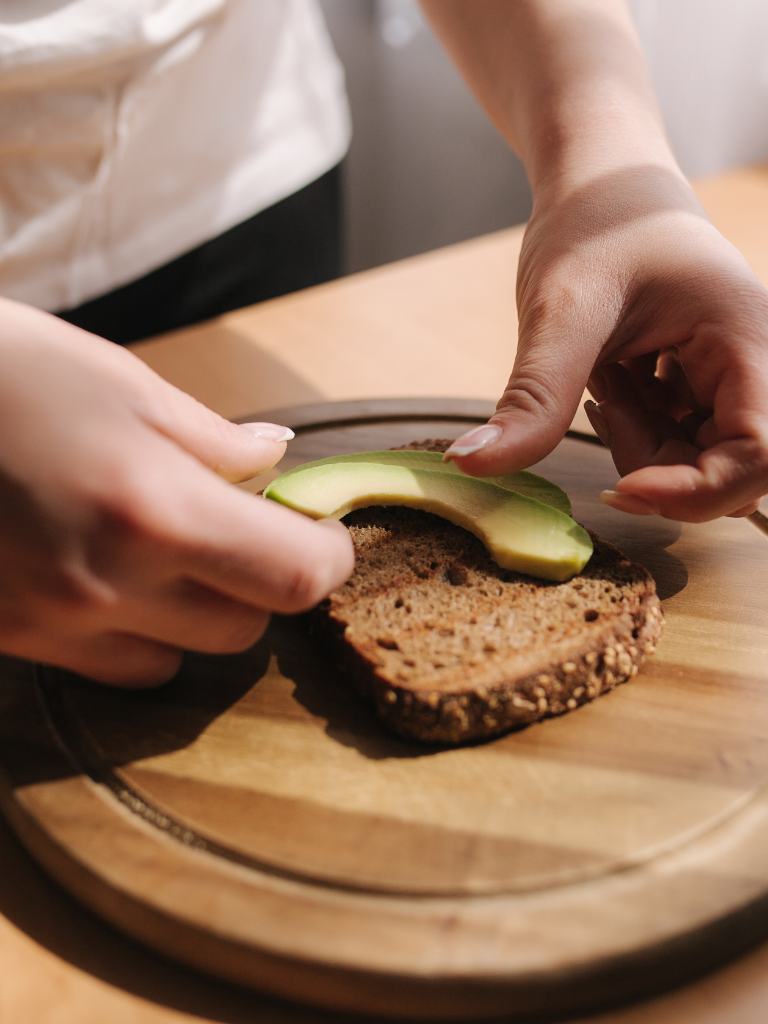
(2) Unclean Surfaces
Unclean surfaces can sabotage your gluten-free diet. A chef, for example, might use a cutting board to slice steak marinated with soy sauce, which contains gluten, and then use that same cutting board and knife to cut a gluten-free piece of steak.
Make sure a surface is thoroughly cleaned before it’s used to prepare gluten-free food. If sharing a house with people who eat gluten, try creating separate areas or gluten-free zones within the kitchen where you can safely prepare gluten-free food only.
(3) Cutting Boards
Wooden cutting boards can transfer food from one source to another. While a clean wooden cutting board is unlikely to get you sick, it could. That’s why using a dedicated cutting board is wise when preparing gluten-free foods.
For more information on cutting board safety, read my article, “Can Gluten Linger on a Cutting Board?“
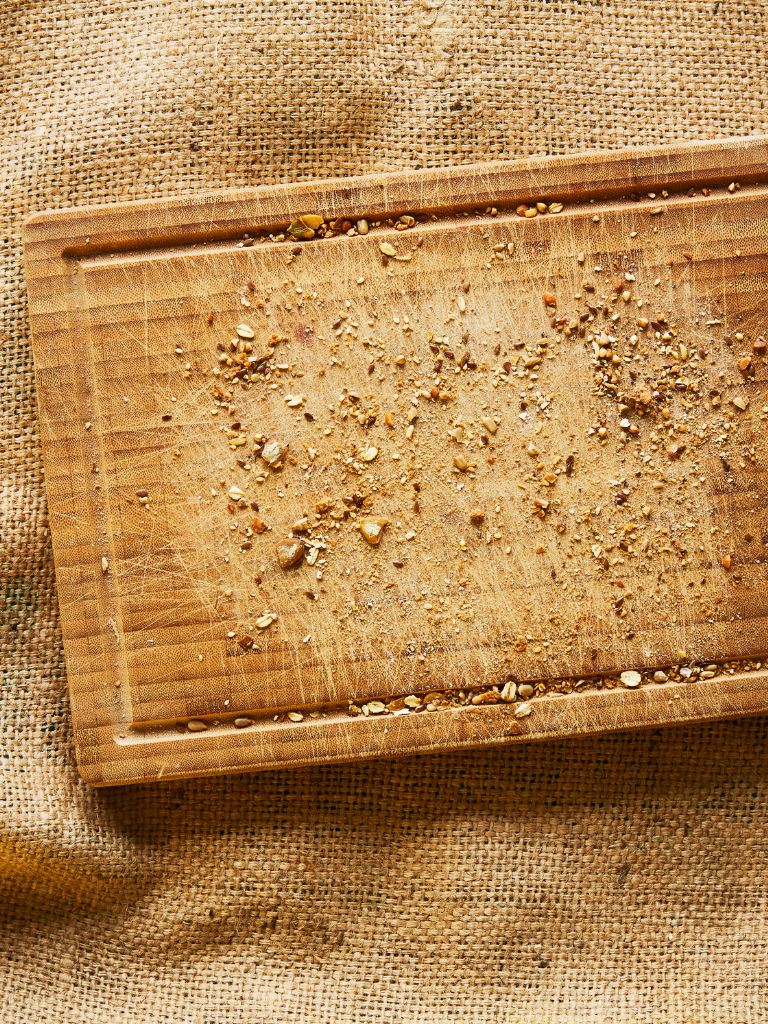
(4) The Waffle Iron
That gluten-free waffle you were served at a restaurant was likely prepared in the restaurant’s only waffle iron. Yep, it’s the same one used to cook gluten-full and gluten-free waffles. The same goes for the shared waffle iron at home.
I recommend that you don’t order waffles at restaurants, and at home, I recommend investing in a dedicated gluten-free waffle iron.
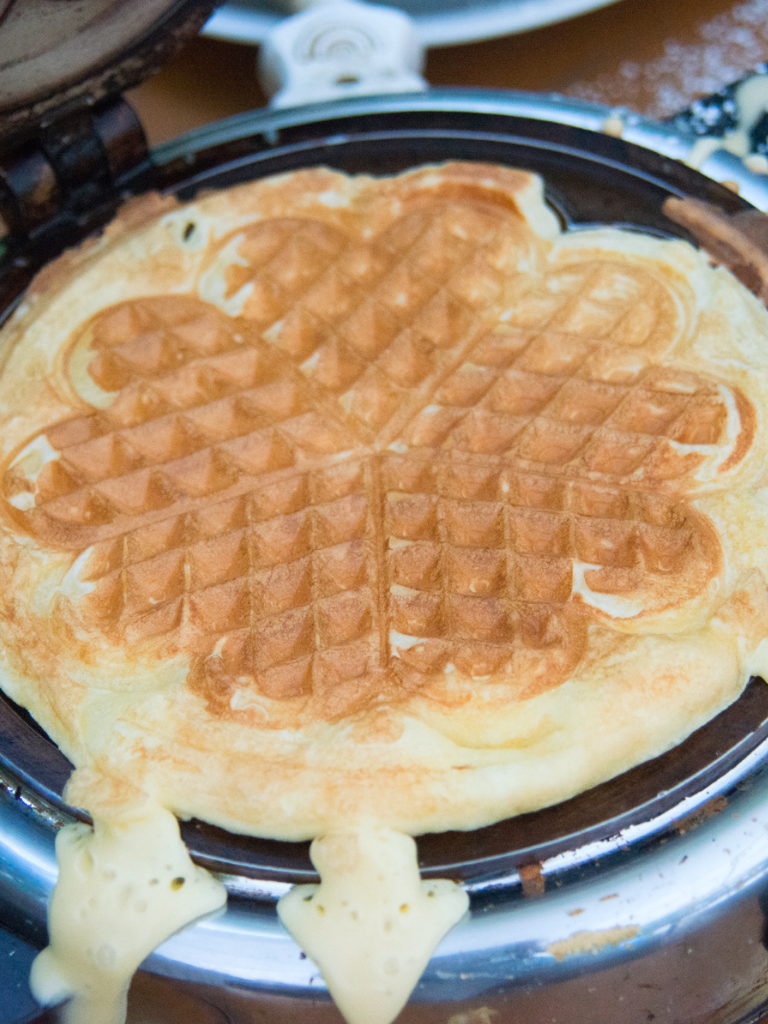
(5) The Griddle
While waffles are cooked in a waffle iron, pancakes are cooked on a flat griddle surface. If the griddle is used for cooking both gluten-full and gluten-free pancakes, well, Houston, we have a problem. Even if the griddle is divided, it’s easy for foods to seep into one another and for the spatula to become used for flipping both types of pancakes.
A shared griddle can also be an issue when restaurants cook burgers and toast buns on the same griddle surface. The shared surface may contain bits of gluten.
You could always ask them to cook your gluten-free pancake or burger in a clean pan instead of a shared griddle. That is a workaround many restaurants will oblige.
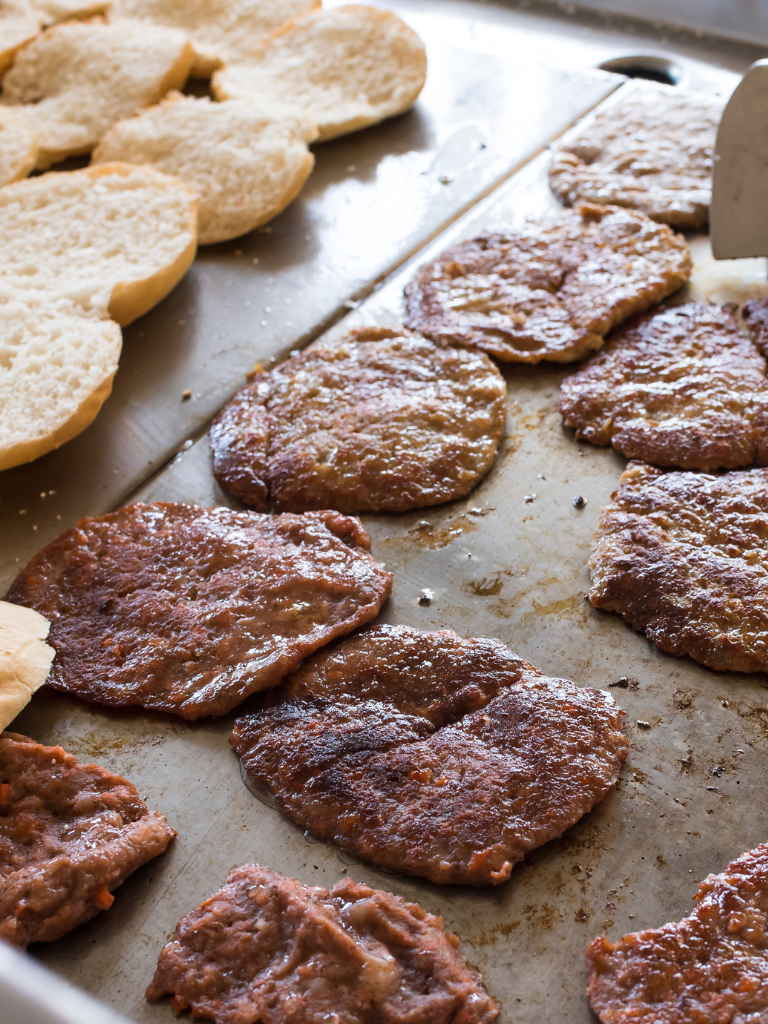
(6) The Grill
The grill is often beaming with stuck-on gluten bits that are impossible to remove, no matter how hard you clean it. Heat does not kill gluten! Learn more about cooking food on a shared grill in my article, 13 Tips For Surviving Summer Cookouts When You’re Gluten-Free.
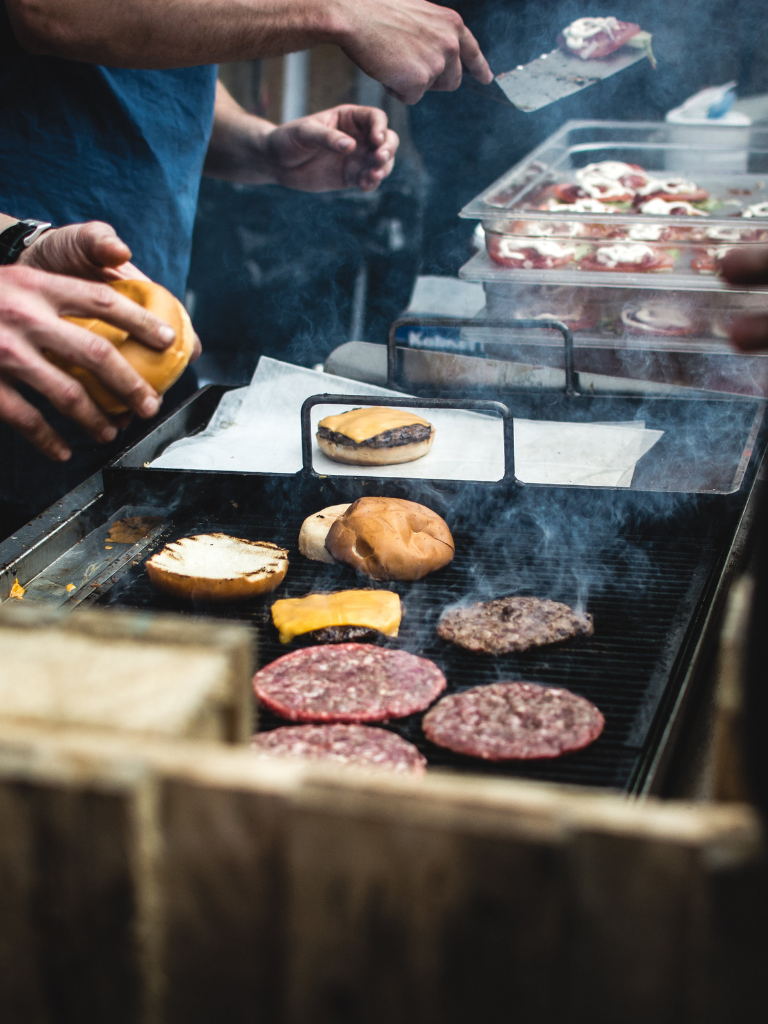
(7) The Ice Cream Scoop
Ice cream scoops spread cross-contamination when they’re used to scoop gluten-y cookie dough ice cream and then used to scoop gluten-free vanilla ice cream. Soft-serve, like frozen yogurt, is safer since there’s no scooping involved.
(8) The Toppings Bar
When you go for fro-yo with your family, it’s usually easy to identify which yogurts are gluten-free and which are not. But when you run through the toppings bar, cross-contamination lurks everywhere. Bits of Fruity Pebbles are inside the chopped nuts, and suddenly, nothing is safe.
To get around this, bring your own toppings or ask the attendant if they can get your fresh toppings that the public hasn’t touched.
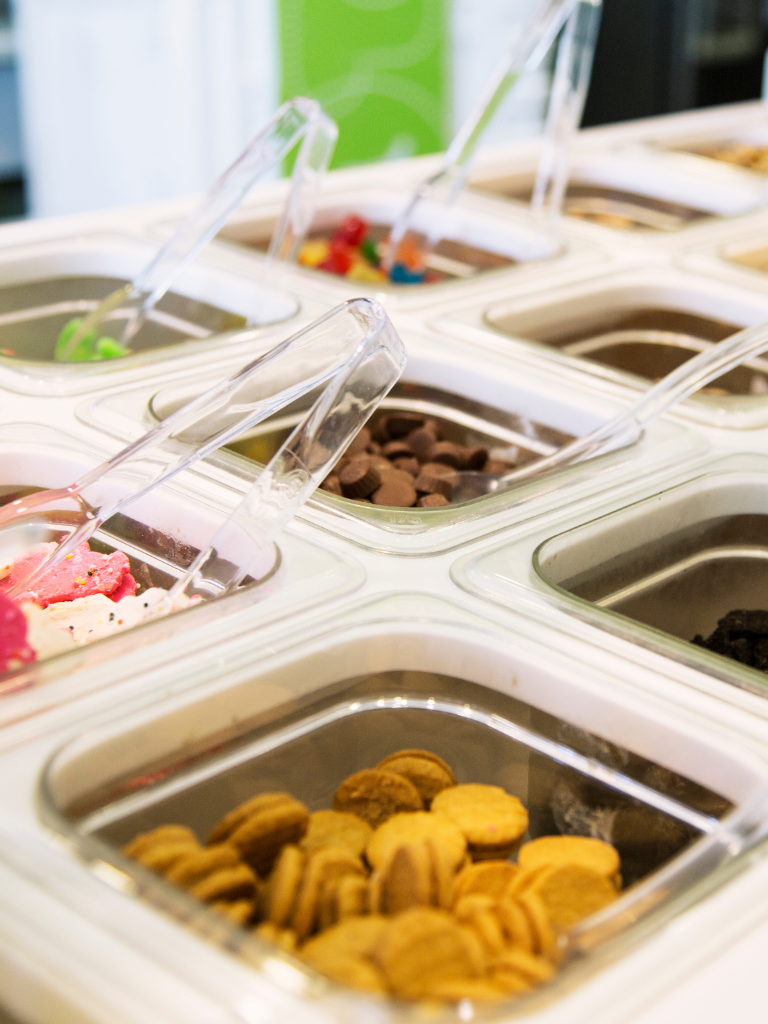
(9)The Electric Mixer
When desserts are mixed in a shared electric standing or handheld mixer, they can quickly become contaminated with bits of flour. That’s because flour bits often get stuck in the crevices of these kitchen appliances, and then they’re knocked into the gluten-free batter.
I recommend using a dedicated mixer at home and avoiding desserts prepared in a shared mixer at restaurants and friends’ houses. You can also support your local, gluten-free bakeries when craving a sweet treat.
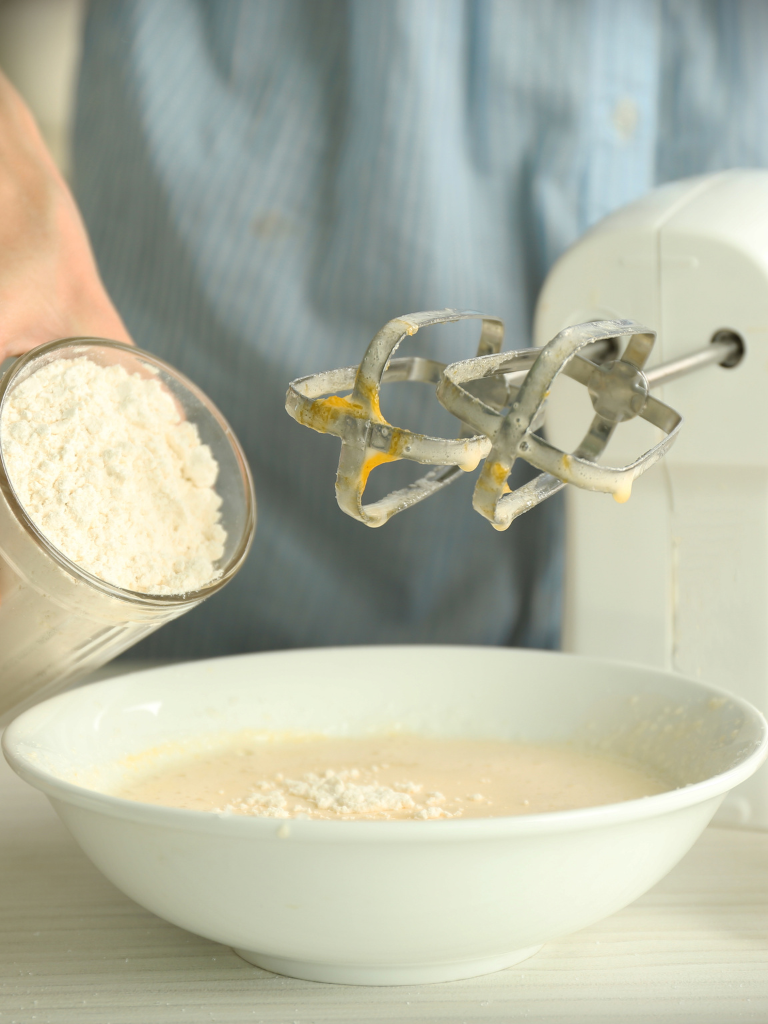
(10) The Deep Fryer
The deep fryer is a hotbed for gluten cross-contamination at restaurants. For example, a restaurant may use that same fryer to cook naturally gluten-free French fries and gluten-y chicken nuggets. This means the French fries come in contact with gluten, rendering them no longer gluten-free.
Ask your server if the restaurant has a dedicated gluten-free fryer. If the fryer is shared, skip all fried foods, including but not limited to:
- Breaded Chinese food dishes (sesame chicken, sweet and sour chicken)
- Calamari
- Chicken fingers
- Chicken wings
- Corn dogs
- Corn or tortilla chips
- Donuts
- Egg rolls
- Falafel
- Fish sticks
- French fries
- Fried chicken
- Fried appetizers
- Fritters
- Onion rings
- Tempura
- Wontons
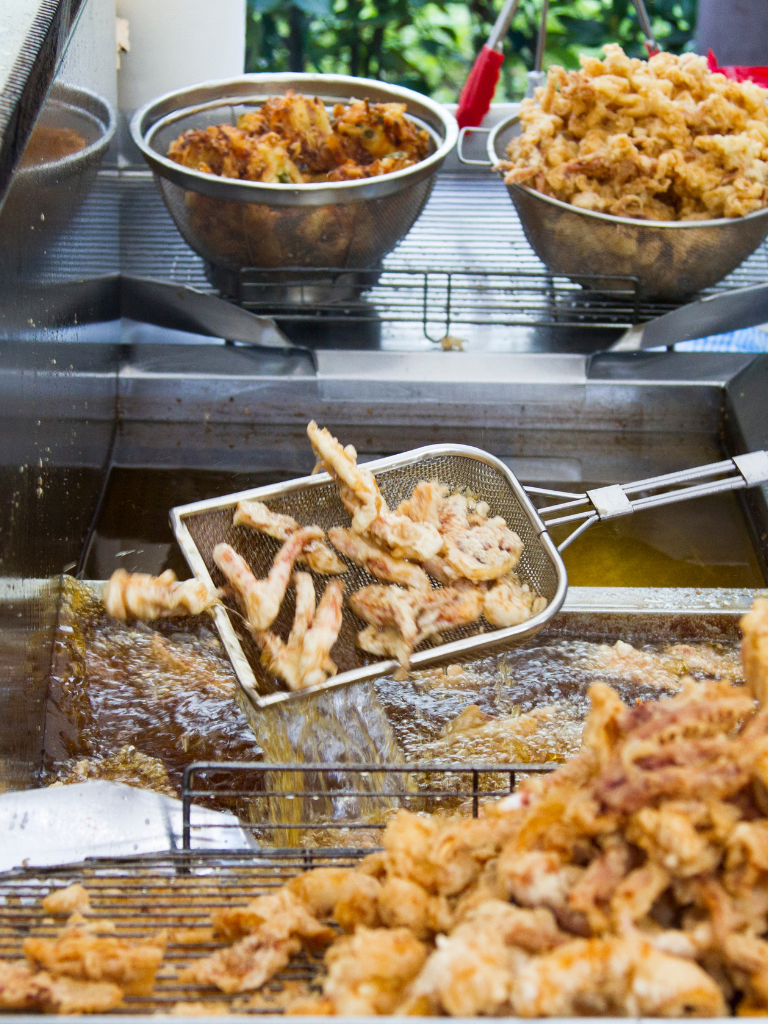
(11) Pasta Water
Ordering pasta at a restaurant is like playing Russian Roulette. It’s why, in my ebook, The Ultimate Guide to Eating Out Gluten-Free, I recommend against ordering pasta at restaurants.
Too often, restaurants cook gluten-free pasta in the same water as regular pasta, and I know first-hand how scary this can be because it happened to me at the Cheesecake Factory.
Look closely at the following photo to spot a stray strand of angel hair pasta floating in my gluten-free fusilli dish. Gee, how did that get there?
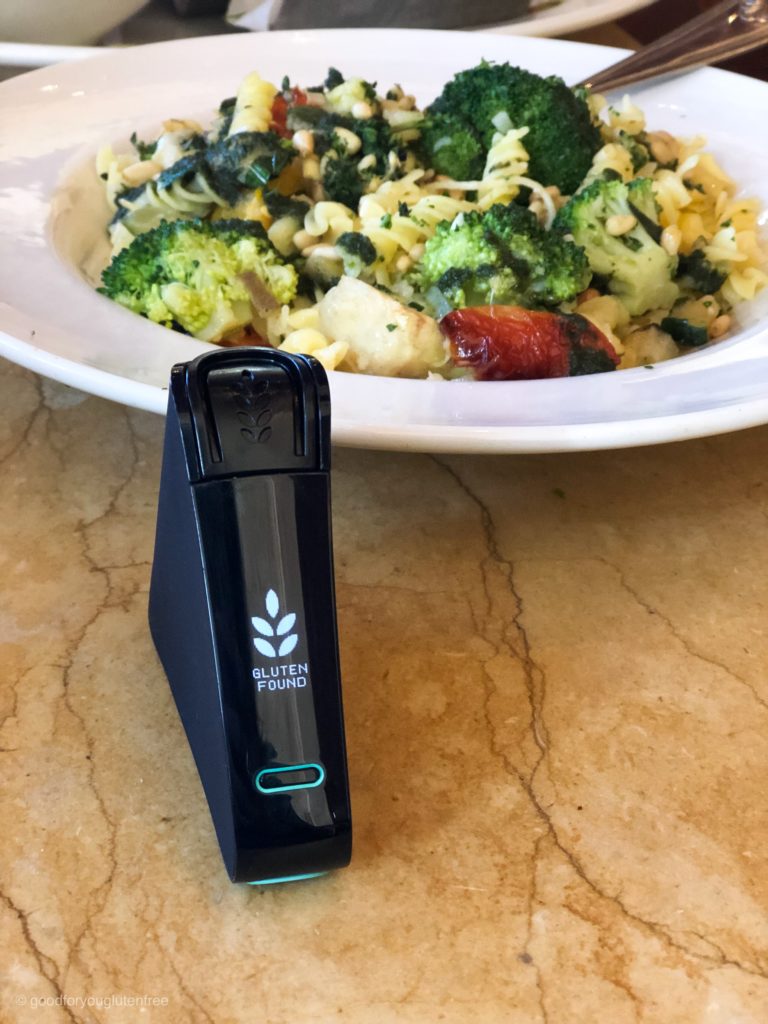
(12) Buffets
At one time, I loved buffets, especially the defunct Sweet Tomatoes salad bars and the extravagant buffets in Las Vegas that I ate religiously when I visited my grandmother.
Today, I see buffets, hot bars, and salad bars as gluten cross-contamination cesspools, with gluten-free foods being comingled with gluten-containing foods.
I’ve watched people use the same tongs to grab various items, leaving the spoon used to scoop the couscous (not gluten-free) inside the mashed potatoes (gluten-free).
My friend once hosted a pasta bar buffet at her home, complete with a big bowl of gluten-free pasta alongside the other pasta dishes.
I noticed the gluten-free bowl had two spoons when I got to the pasta bar. One of the spoons from the regular pasta somehow made its way into the gluten-free pasta bowl, which means someone used the spoon from the regular pasta to scoop the gluten-free pasta.
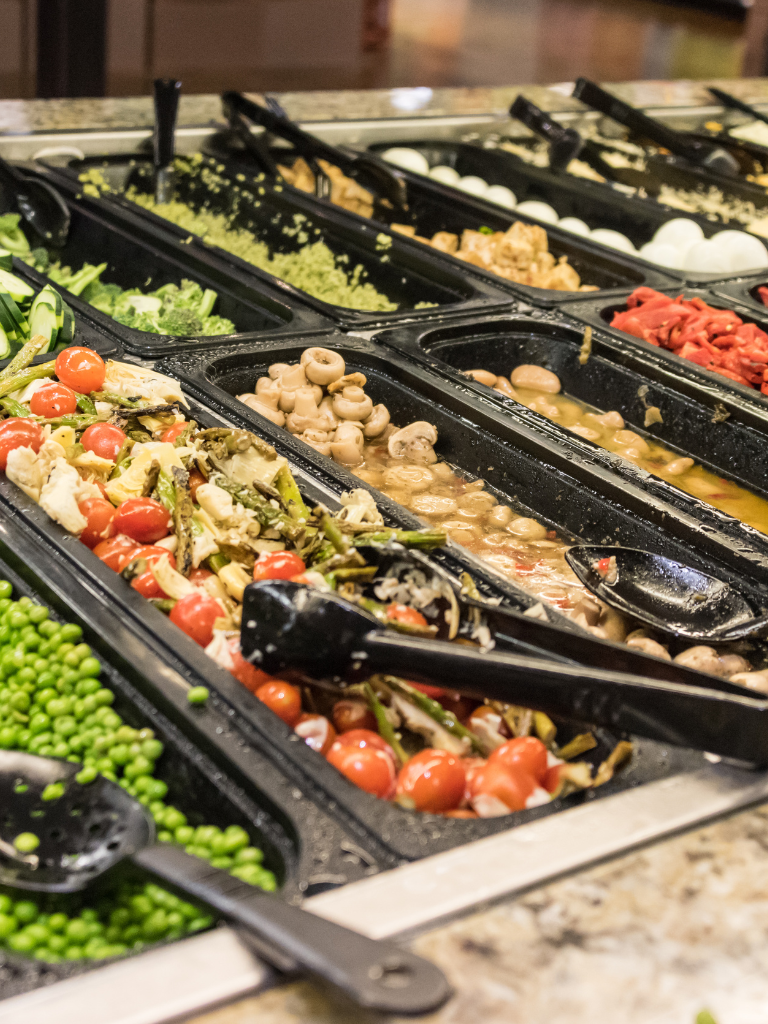
(13) The Toaster
While a restaurant might offer you a piece of gluten-free toast to go with your omelet, the staff might toast that gluten-free slice of bread inside a shared toaster used to toast wheat bread. You might also be using a shared toaster at home.
While most people with celiac disease or gluten intolerance agree it’s wise to use a separate and new toaster to toast gluten-free bread, and I highly recommend having a dedicated toaster oven at home, it’s essential to understand that the science doesn’t fully support this recommendation.
Researchers tested the level of cross-contamination found on gluten-free bread toasted in shared toasters inside a busy hospital cafeteria. The toasters had visible gluten-containing crumbs and were not cleaned between uses.
Surprisingly, researchers didn’t find gluten transfer from a shared toaster to be above the 20 ppm threshold, the amount of gluten a product can contain to be labeled gluten-free.
While it’s nice to know there is only a small risk of cross-contamination in a shared toaster, it’s important to remember that this is a one-time, limited study in a controlled scenario.
Would these results replicate in a busy kitchen or a popular brunch restaurant? The answer to this question is unknown, which is why many gluten-free experts recommend avoiding shared toasters or using protective toaster bags.
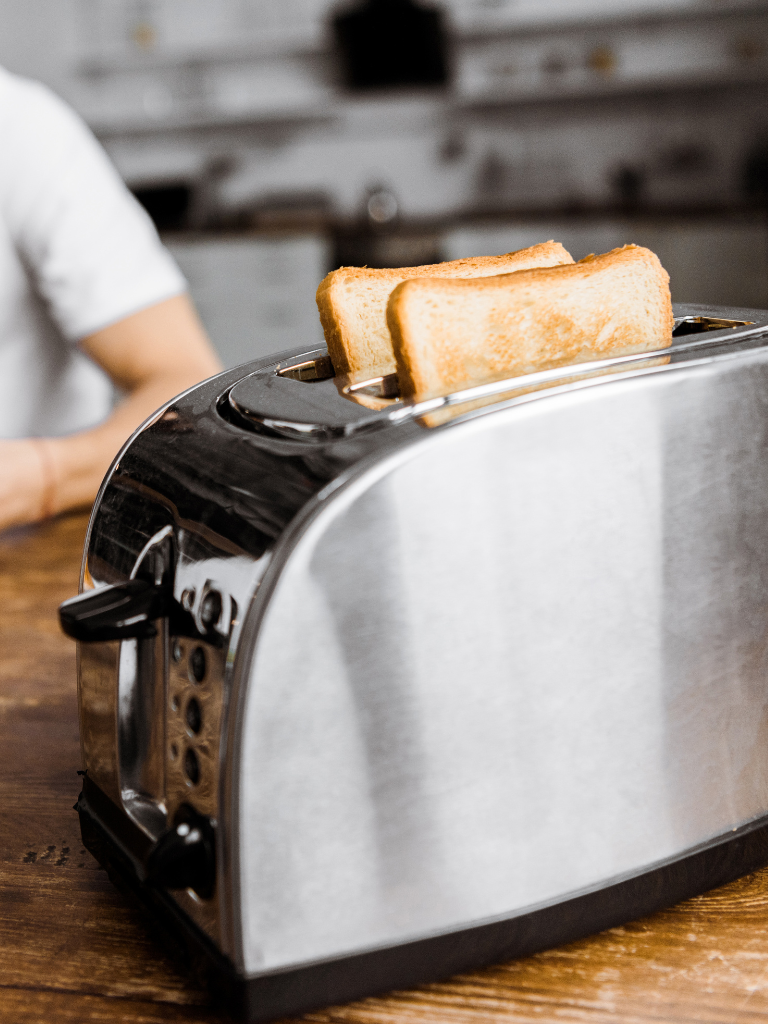
(14) The Colander / Strainer
Many people will tell you that cleaning a colander well with soapy hot water will ensure it’s clean for straining both regular and gluten-free pasta, but I’m not buying it.
When I look at my stainless-steel colander, I see bits of leftover food stuck in the crevices. At home, I recommend using a dedicated strainer to strain gluten-free pasta. It’s better to be safe than sorry. And again, I recommend avoiding pasta at restaurants altogether.
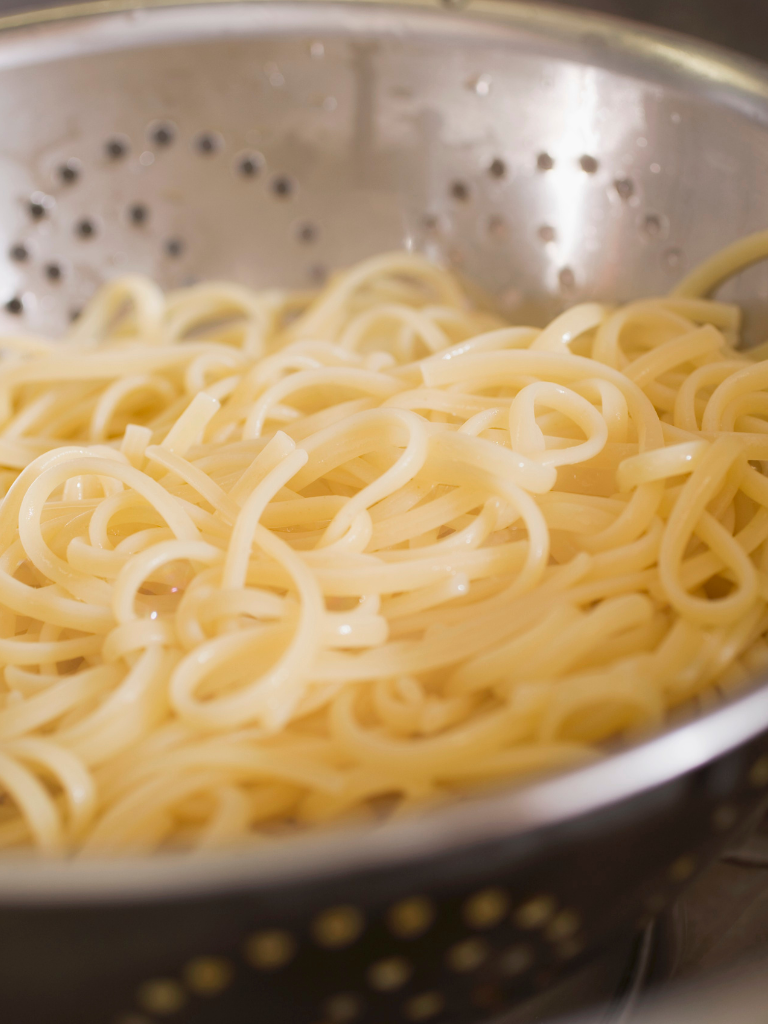
(15) Bulk Bins
Bulk bins, which can contain beans, oats, barley, quinoa, rice, etc., are highly susceptible to becoming cross-contaminated with gluten because people often use the same scooper to handle oats and barley as they do to handle rice and quinoa.
They’re also careless, dripping remnants everywhere, contaminating the other bins and products.
For more sources of cross-contamination at the grocery store, read my article, 5 Hidden Sources of Gluten at the Grocery Store.
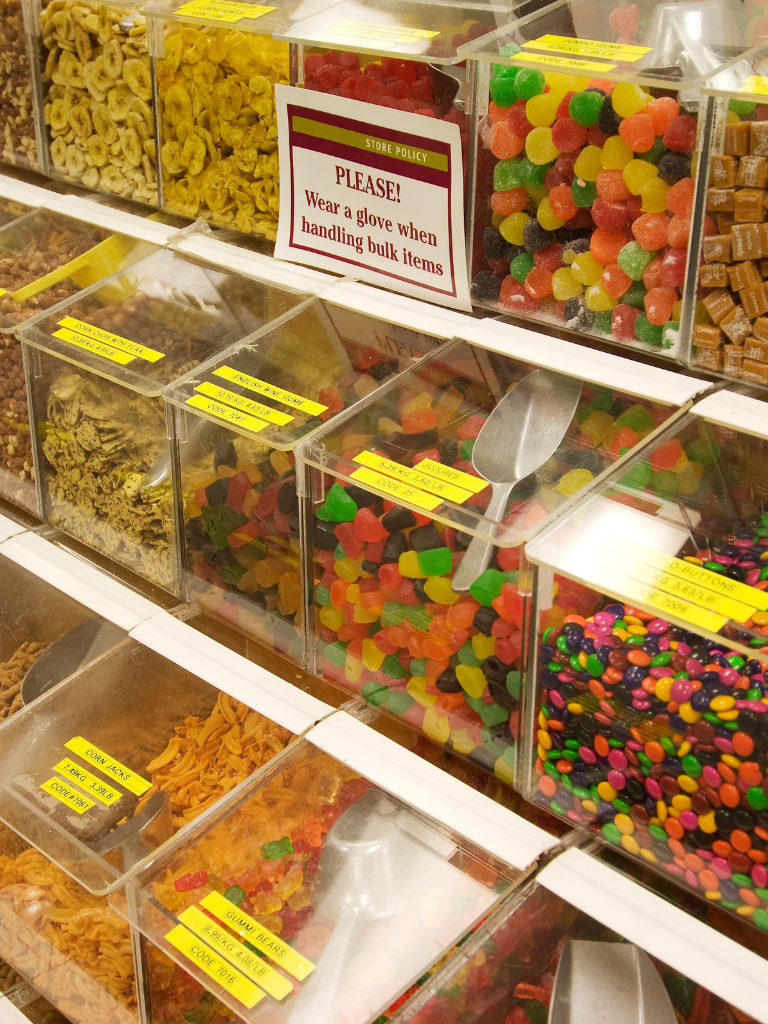
(16) Oats
If you’re gluten-free, you know that oats are off-limits unless labeled and, even better, certified gluten-free.
Oats are grown in rotation with wheat and other crops, which means they’re grown on shared fields and harvested with shared equipment.
While naturally gluten-free, oats often contain stray gluten grains and flour dust, making them one of the most gluten-cross-contaminated products.
There are oats grown on dedicated gluten-free oat fields, known as purity oats, and many companies employ optical and mechanical sorting and cleansing to make regular oats, known as commodity oats, safe for the gluten-free community to consume.
Unless a product containing oats is labeled “gluten-free,” it’s unsafe for people with celiac disease and gluten intolerance to consume. Period.
Learn more about oats in my article, Are Oats Gluten-Free? Unpacking Confusing and Contradictory Information.

(17) Products Produced on Shared Equipment
If you’re on a gluten-free diet, one of the most important skills you can master is label reading. I highly recommend enrolling in my SIGNATURE Gluten-Free Course to learn and master this critical skill if you haven’t already.
Cross-contamination can occur during manufacturing when shared equipment is used AND a product isn’t labeled gluten-free.
However, remember that products labeled gluten-free and certified gluten-free can be produced on shared equipment. Many gluten-free products are manufactured on shared equipment, as it’s costly and difficult to find dedicated manufacturing facilities.
These products are 99.9% of the time safe for anyone with celiac disease or gluten intolerance. While there is always a cross-contamination risk, and nothing is foolproof, there’s only a tiny chance it would pose a cross-contamination risk.
Plus, denying yourself the ability to eat gluten-free-labeled foods would be an unnecessary over, leading to poorer overall dietary adherence, hypervigilance, and lower quality of life.
Remember, if a product is labeled “gluten-free,” the manufacturer has validated that it meets the FDA’s gluten-free labeling guidelines. If a product is labeled “certified gluten-free,” it means it has been validated by a manufacturer, following guidelines set forth by a third-party certifying agency, that it’s gluten-free.
These guidelines are typically stricter than the FDA’s guidelines. If a product isn’t labeled gluten-free, it likely means the company hasn’t tested the final product to ensure it meets the FDA’s gluten-free labeling guidelines. It may be gluten-free, but you won’t know without the label.
(18) Shared Sponges
Sponges soak up food and grime, so using a dedicated gluten-free sponge is essential when manually cleaning dedicated gluten-free pots and pans. That said, a dishwasher removes all gluten grime, and it’s generally safe to use dishes washed in the dishwasher.
Also, there’s no need for separate utensils (except wooden spoons, which can retain food) or pots and pans when items are sufficiently cleaned between uses.
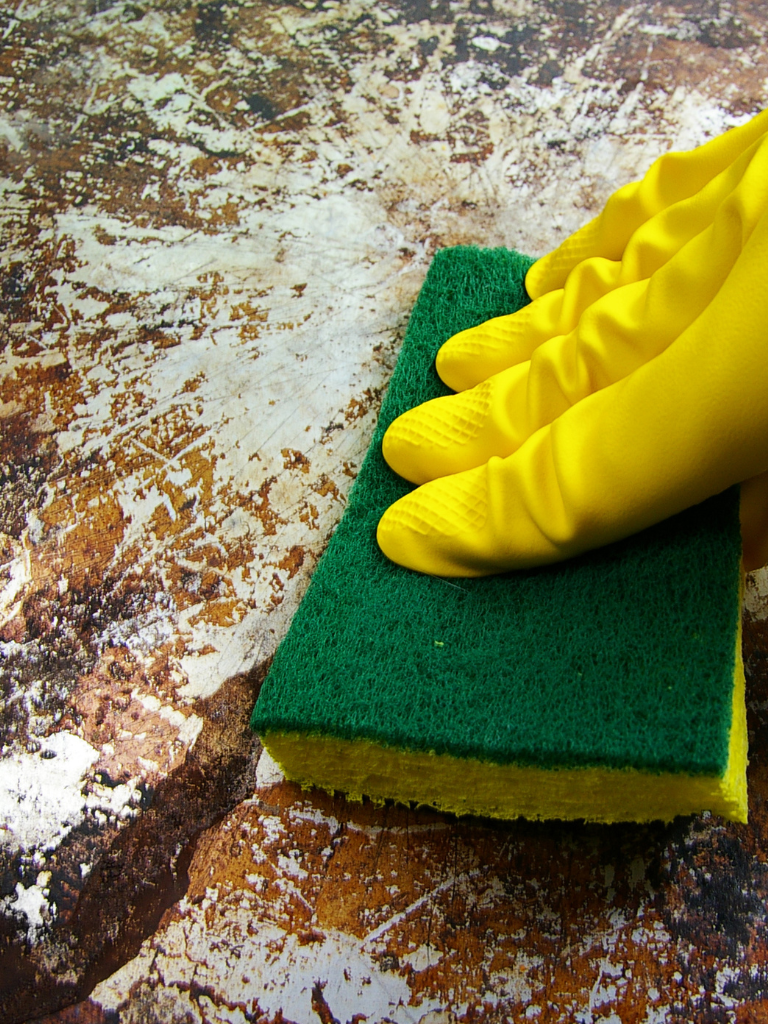
(19) Hand Towels
If you’re sharing your kitchen with gluten-eaters, you may want to get your own set of dish towels. People tend to pick up the dish towel to brush off their hands after preparing a sandwich or bagel, making it prone to bits of gluten crumbs. You can color code your dish towels, so you know that the red ones, for example, are always for handling gluten-free foods.
(20) Convection Ovens
A convection oven circulates air inside an oven. Don’t use the convection setting to cook gluten-free food in a shared oven. If you must use the convection setting, cover your food with foil to prevent loose gluten particles from circulating into it.
(21) The Air Fryer
An air fryer works like a convection oven and circulates air around the food. It should not be used to prepare gluten-full and gluten-free foods. My air fryer is for gluten-free use only, and I used it below to make gluten-free toasted ravioli, which are breaded with gluten-free breadcrumbs.
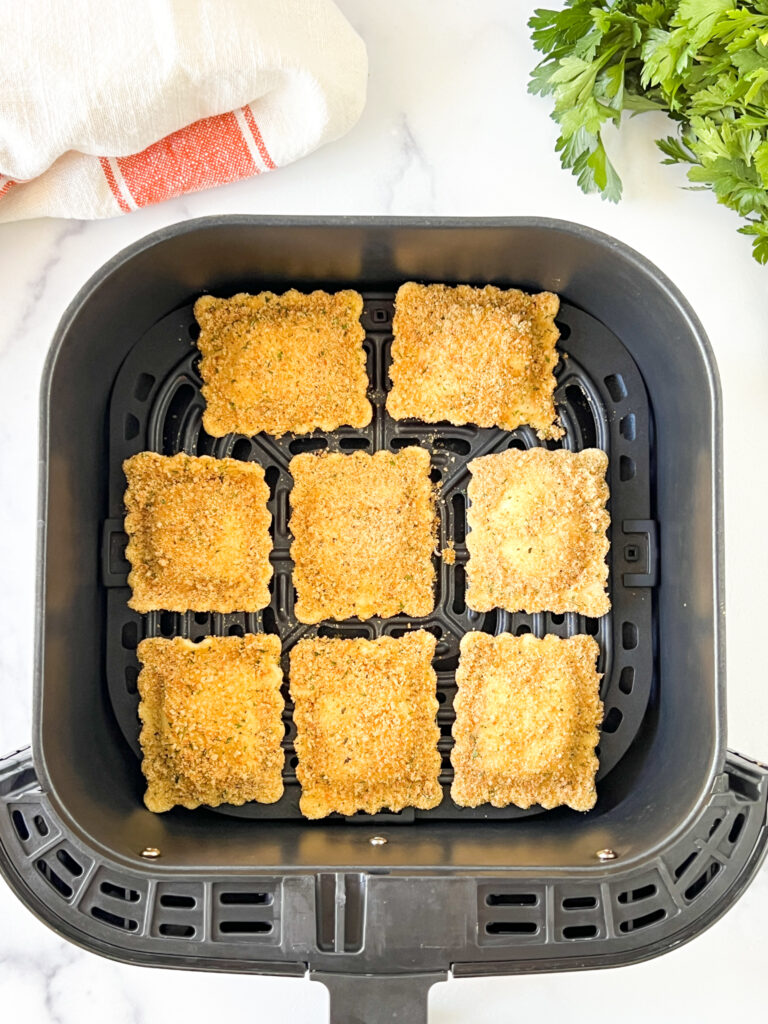
(22) In the Pantry
If you’re sharing your pantry with other family members who eat gluten, have a dedicated shelf in case of spills and leaks, preferably the top shelf.
Keeping your food separate and labeled will deter the gluten-eaters in your house from eating and touching your foods.
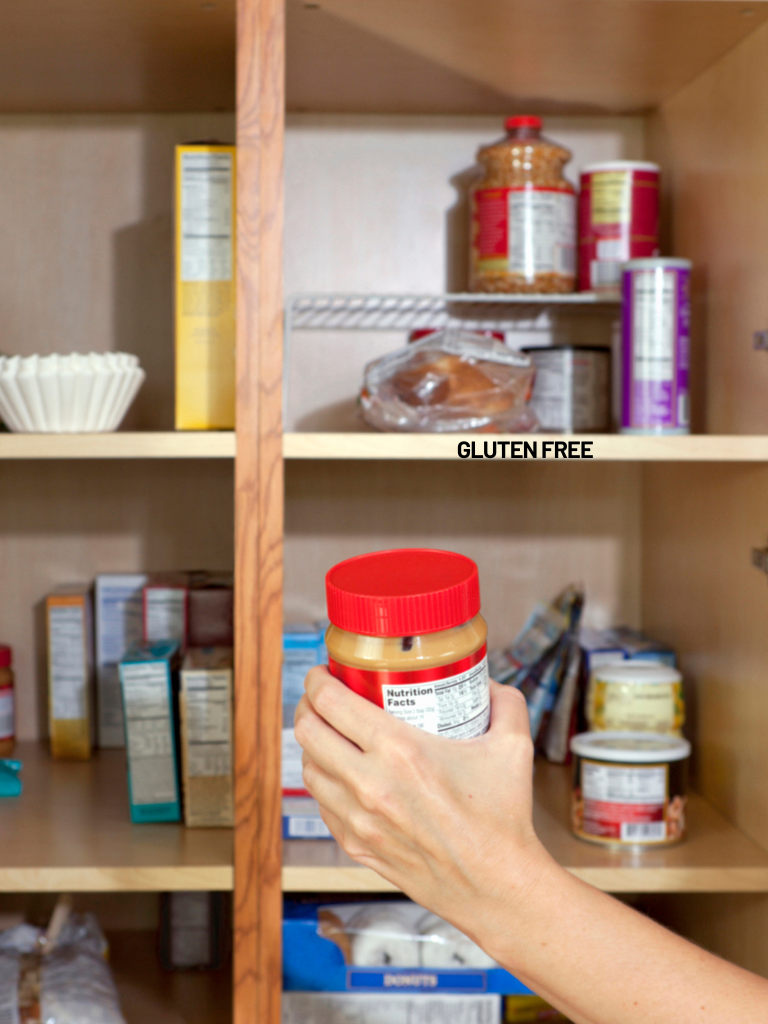
(23) Condiments
You must also maintain your own gluten-free tub of butter, mayonnaise, jelly, peanut butter jars, and other condiments that require you to dip your knife into the sauce and then spread it on the bread.
Gluten crumbs can easily be transferred from the surface of the bread to the condiments and vice versa, making you sick. Label your condiments and store them in a separate area in your pantry and fridge.
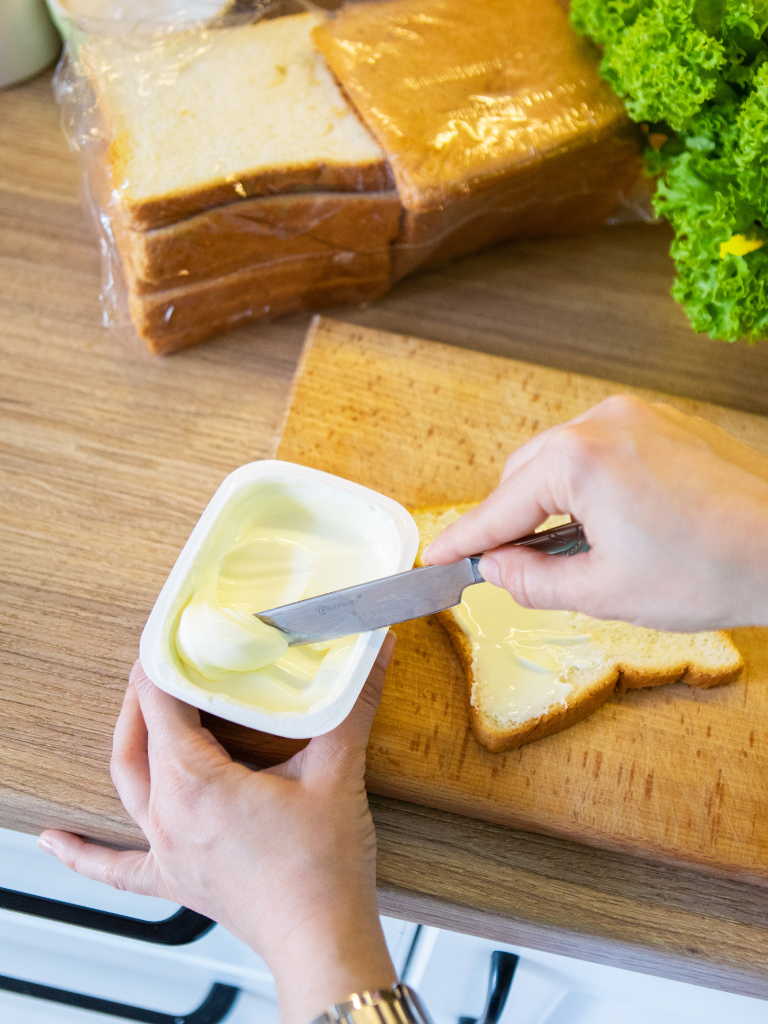
(24) Airborne Flour
Airborne flour, or gluten dust, can land on all kitchen surfaces and other foods. If others in your household are baking with wheat flour, ask them to do so cautiously to avoid creating airborne gluten.
Airborne flour is a real issue in restaurants, especially in pizza restaurants where the chef is flipping floured pizza dough in the air. Beware. Learn more about the risks of airborne gluten exposure in my article, Should You Worry about Airborne Gluten?
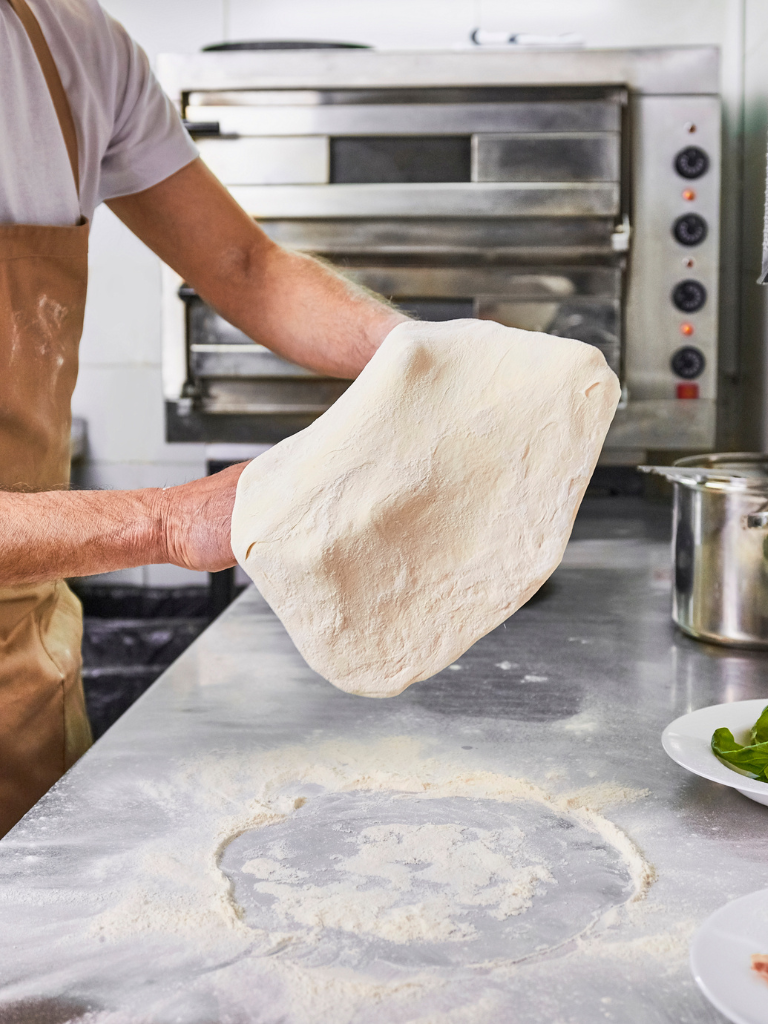
(25) Baking Supplies
If you’re sharing a kitchen with people who bake with wheat flour, beware of using shared baking supplies. Someone might dip their measuring cup in the flour jar and then dip that same cup into the sugar bag, thereby cross-contaminating the sugar, baking powder, etc.
Always use dedicated gluten-free baking ingredients and supplies when preparing gluten-free baked goods. Better safe than sorry.
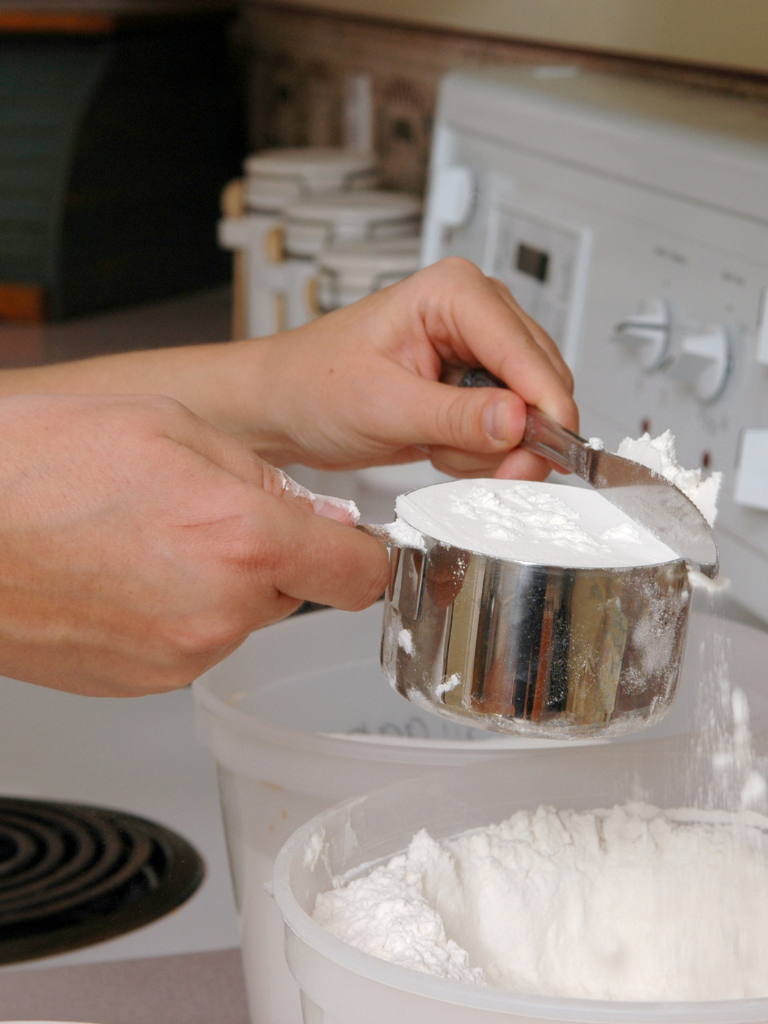
(26) Sharing Drinks
Avoid sharing drinks that your mouth and another person’s mouth, who may have just consumed gluten, would touch, including the rim of a glass or a straw. A workaround is to use two straws.

(27) Sharing Food
It’s tempting to share food with friends and grab a forkful of food from their plate. But if their fork has been used to consume gluten-y pasta, you don’t want them dipping it in your gluten-free pasta. Prepare a small plate of food for them using your clean utensils.
(28) The Drip
The “drip” occurs when gluten-containing food is stored above a gluten-free item. Crumbs from the food stored above another item can easily “drip” onto the food below it.
I found these gluten-free cupcakes stored on the shelf directly below the gluten-y baked goods at a local bakery in Denver. My immediate reaction was, “No thanks!”
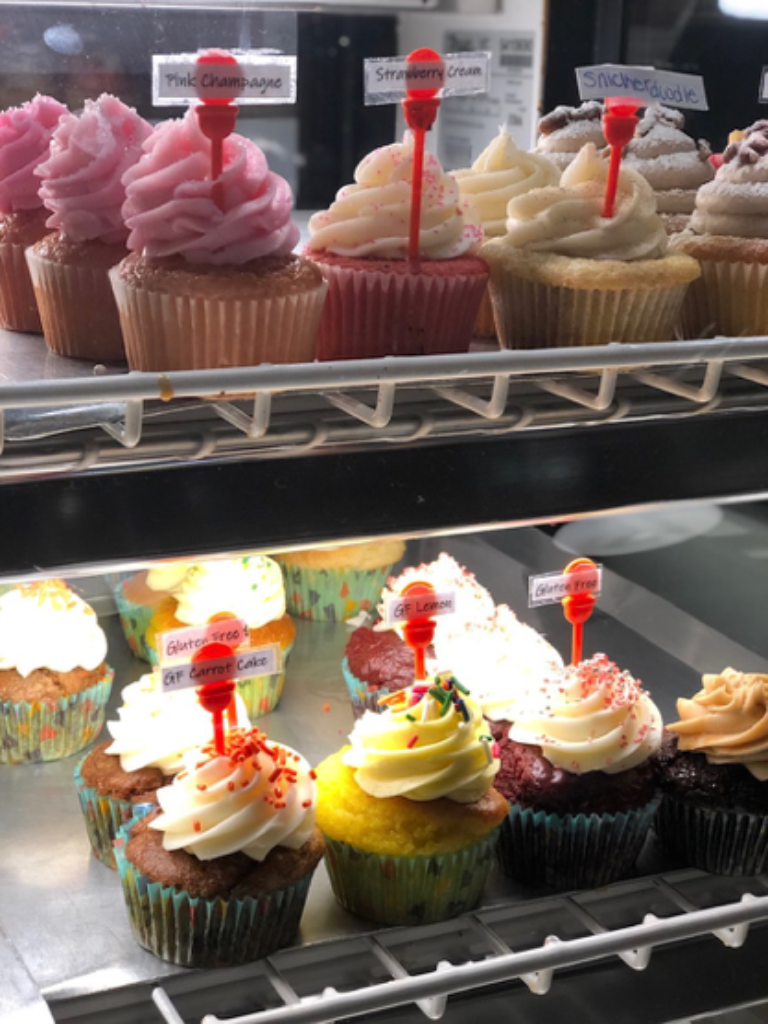
(29) Cookie Sheets
Cookie sheets – or baking sheets – are coated with baked-on foods. If those foods are gluten, they can easily transfer to a gluten-free item. I recommend always covering baking sheets with foil or parchment paper to prevent cross-contamination so you cook your food on a clean surface.
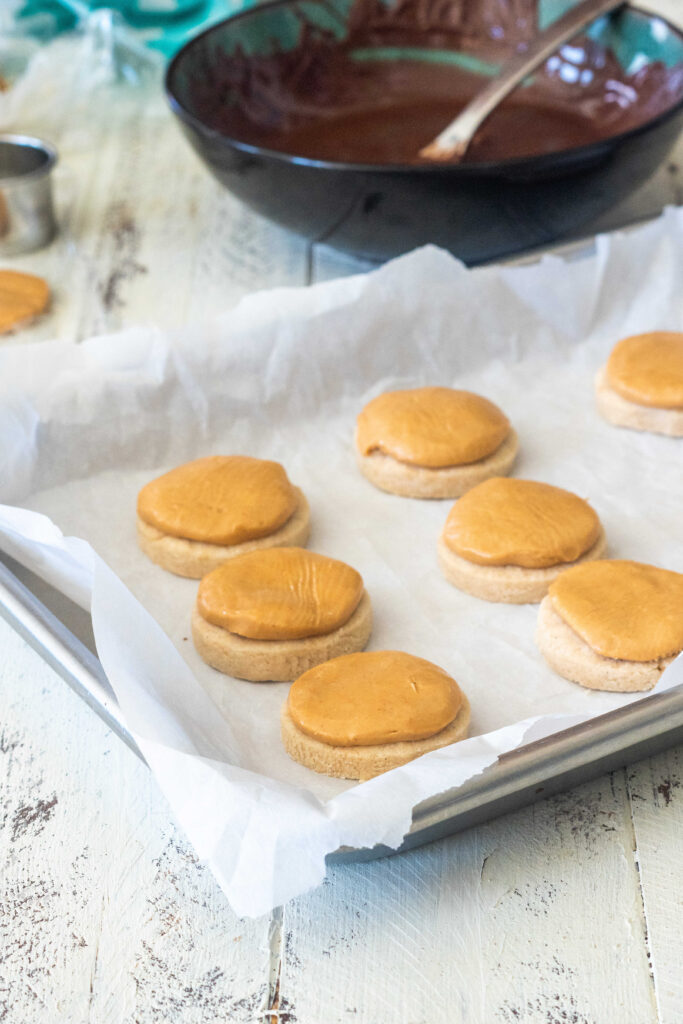
(30) Cupcake Pans
For some reason, cupcake pans are rimmed and can harbor gluten bits. If you plan on baking (which you will), I recommend getting dedicated gluten-free cupcakes and muffin pans. They’re inexpensive and will give you peace of mind.
You cannot just use a muffin liner in the pan. The baked-on bits stick to the rim vs. the cavity, and a liner does not protect you from exposure to bits of baked-on gluten in the rim.
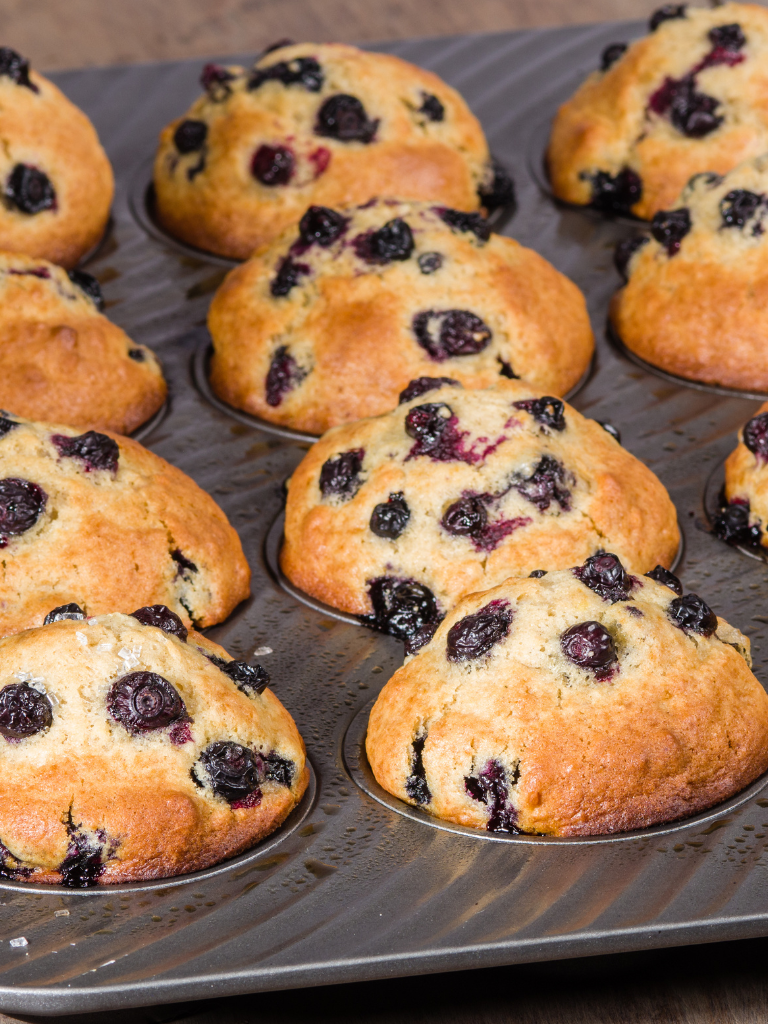
(31) Panini Press
The panini press is another source for potential gluten cross-contamination if used to make regular and gluten-free sandwiches. I can personally attest that, like a waffle iron, a panini press is difficult to clean between uses. Avoid using one unless it’s dedicated gluten-free.
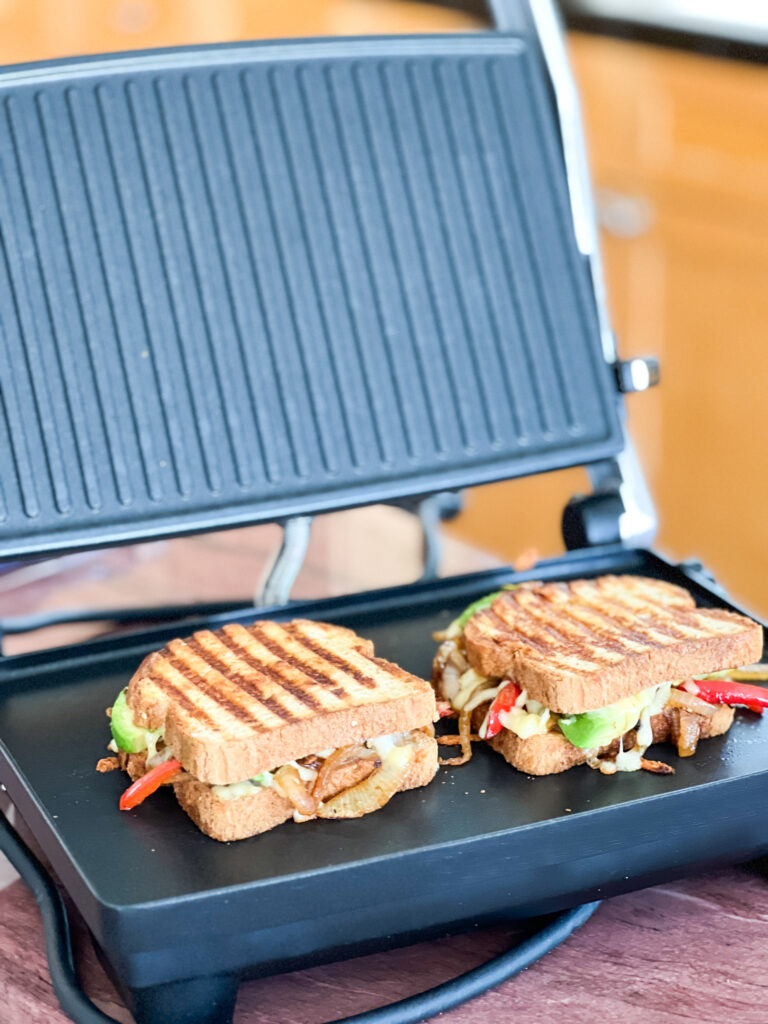
(32) The Pasta Machine
If you love to make homemade gluten-free pasta, do not use a shared pasta machine. I have a dedicated gluten-free pasta machine, and it’s extremely difficult to clean. It’s best to either hand-cut your pasta or purchase a dedicated gluten-free pasta machine to make my simple two-ingredient gluten-free pasta.
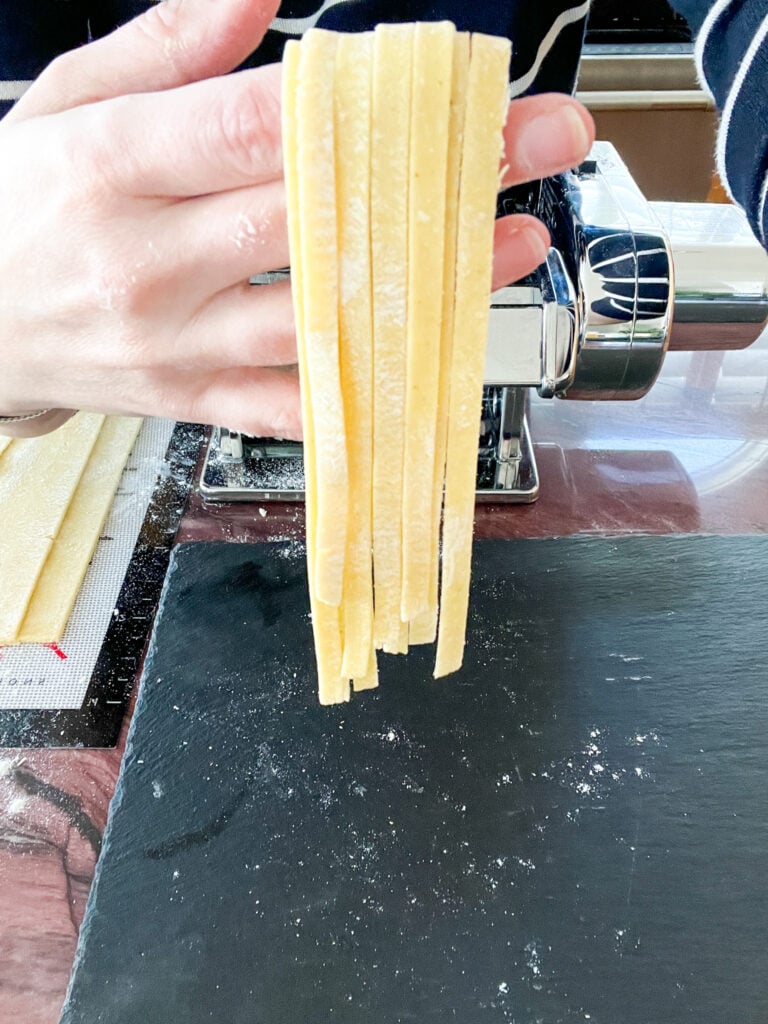
7 Tips For Avoiding Cross-Contamination
While there’s no foolproof way to know if your food has been cross-contaminated with gluten, especially when you eat out and have trusted the meal prep process to another person, you can take a few precautions to avoid being a victim.
(1) Be firm with your server
There are many trendy gluten-free dieters out there. Tell him you’re not one of them. Ask him to take your request seriously. If you feel uncomfortable with your server’s ability and knowledge about this process, speak with the manager.
(2) Look for clues
Some restaurants use different-colored plates or toothpicks to identify gluten-free items. These clues can help you determine how safely your dish was prepared.
The picture below shows that Red Robin marks its gluten-free dishes with a purple toothpick.
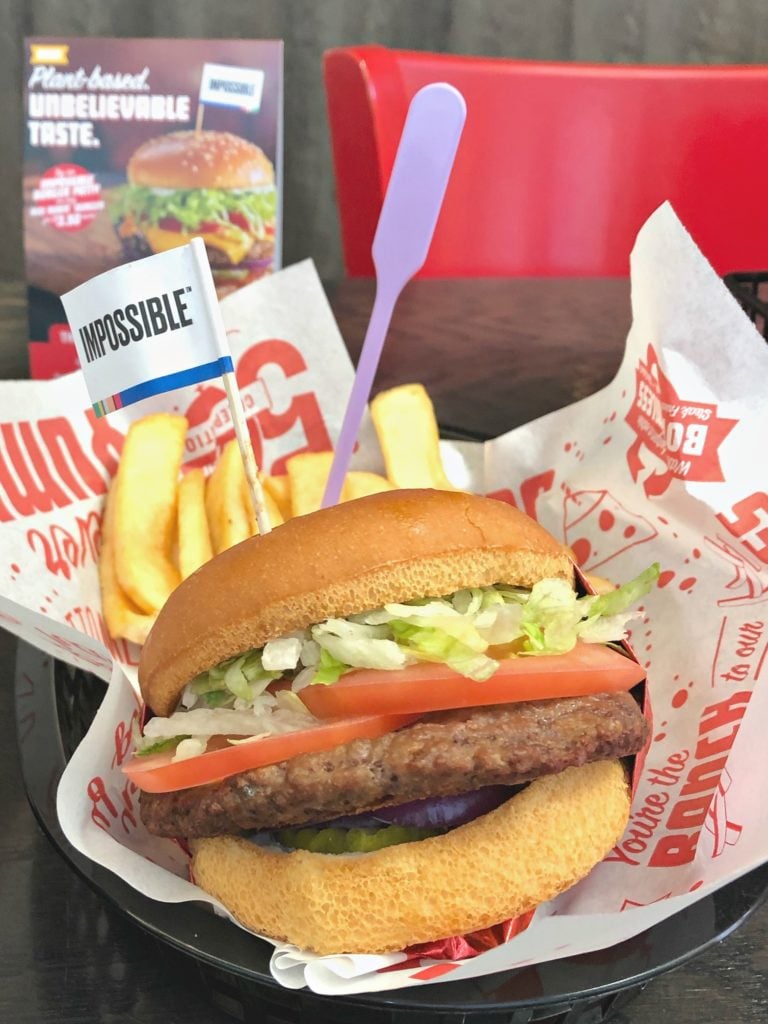
(3) Ask for your dish to be served separately
Ask your server to bring out your dish on a separate tray from everyone else’s food.
(4) Ask your server how he knows it’s gluten-free
Your server may tell you that he picked up your meal from a specific location, verified it was gluten-free with the chef, knows that the gluten-free pancakes look different from regular pancakes, etc.
See what he says and use his response as clues to guide you in making an educated decision about whether or not you feel safe eating something.
(5) Test your food for hidden gluten
The Nima Sensor, Allergy Amulet, and Glutrust are portable gluten-detecting devices that enable you to test your food for hidden gluten.
While you can only test a small piece of your food, if you smear it across your dish before placing it in the test capsule, you might be able to pick up any potential gluten cross-contamination.
Read more about Nima in my article, What You Need to Know About Nima Sensor Before You Buy – Perspective from a Celiac & Nutrition Professional. Below is a picture of me testing a meal at Chili’s with my Nima.
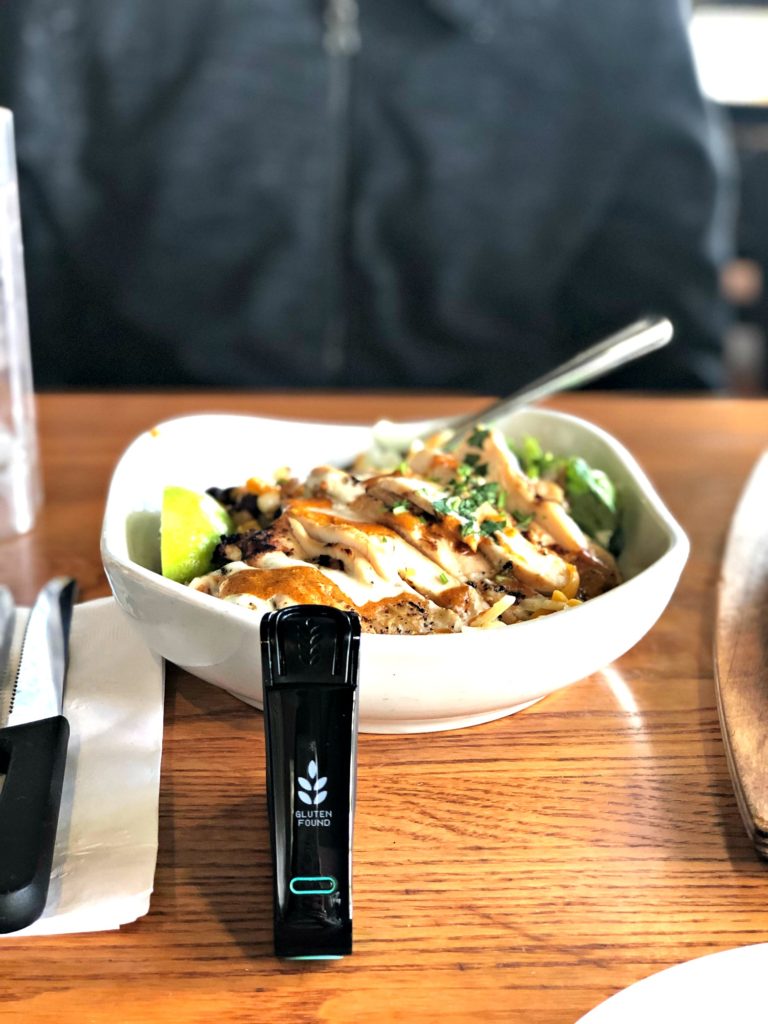
(6) Eat as naturally gluten-free as possible
While an egg omelet can still be cross-contaminated, pancakes and toast are more likely to come in contact with gluten along the way.
Order as naturally gluten-free food as possible to avoid cross-contact snafus when eating out. Read 10 Naturally Gluten-Free Foods Every Celiac Should Be Eating.
(7) Avoid ordering pizza, no matter how tempting
Along those same lines, it’s important to note that pizza is one of the most unsafe dishes you can order at a restaurant, even if it’s gluten-free pizza.
Gluten-free pizza is often prepared along the same assembly lines and cooked in the same ovens as regular pizza.
And if you’ve made pizza before, you know flour gets everywhere in a pizza kitchen, and even airborne flour can harm the gluten-free community.
If you enjoy eating pizza, check out my article that ranks the best frozen gluten-free pizzas (I tested every pizza for hidden gluten), or make my homemade pizza crust recipe instead.
Words of Encouragement
Avoiding all potential sources of gluten Is essential to living a healthy, symptom-free, gluten-free life.
Use this information and strategies about gluten cross-contamination to help you make wise decisions about what you will and won’tYou must protectrotect yourself from accidental gluten exposure at all times.
Learn more tips on how to eat out safely while following a strict, gluten-free diet in my ebook, The Ultimate Guide to Eating Out Gluten Free.
I invite you to enroll in my SIGNATURE Gluten-Free Course to learn more about cross-contamination and the ins and outs of a healthy and fulfilled gluten-free life.
Download my free Gluten-Free Safe Dining Card and show this card to your server when you eat out. He’ll know you’re serious about getting a gluten-free safe meal.
Related Articles
- Setting Up a Gluten-Free Kitchen
- Does a Crock-Pot Absorb Gluten?
- How 20 Restaurants Fared When Tested for Hidden Gluten
- Everything You Need to Know about Gluten-Free Labeling Laws and Certifications
- What’s Gluten Free at The Bonefish Grill?
- Survey Reveals ‘Eating Out Safely’ as the Top Challenge Facing the Gluten-Free Community
- Is Wingstop Gluten Free and the Scoop on Chicken Wing Restaurants